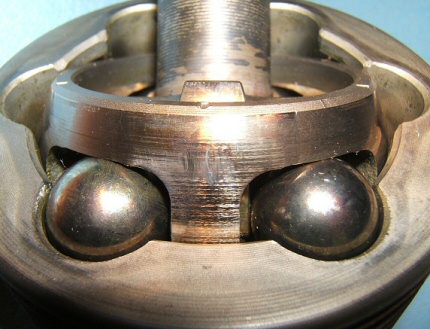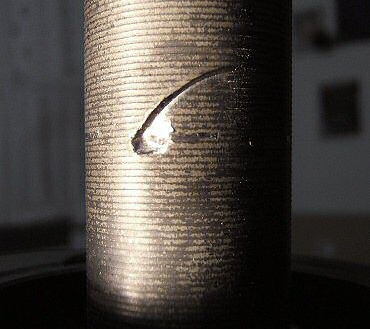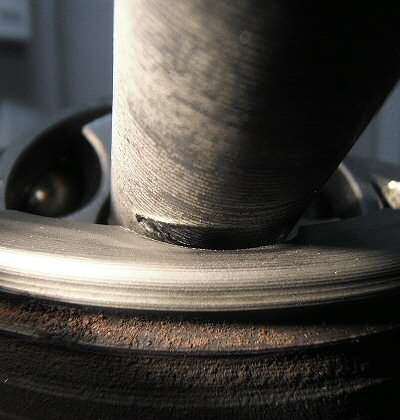Name and Shame: Upstate Auto Body Works, Saratoga Springs, N.Y.
September 23, 2006: Vehicle was involved in a low-speed collision that damaged the left front quarter. The force was sufficient to push the driver's front wheel back into the wheel well. The driver's side tire, rim, strut, knuckle, lower control arm, and tie rod all had to be replaced. The driveshaft was simply reinstalled by Upstate Auto Body.
The local Honda dealer, Saratoga Honda, balanced the new wheel and tire, installed it on the passenger's side; rebalanced the original wheel and tire that had been on the passenger's side and installed it on the driver's side; and aligned the vehicle.
The owner of Upstate Auto Body, who had test-driven the car, mentioned a "very slight pull" in the steering wheel at low speed that could not be corrected by wheel balancing. He attributed it to a defect in the tire.
When I drove the vehicle home three weeks later (10/17/2006), it exhibited severe low-speed oscillation/high-speed vibration, especially under load or coming out of a turn, and a noise in sharp turns—classic symptoms of a bad CV joint. I jacked up the car and noticed a lot of grease thrown inside the wheel (Figure 1), apparently from the CV joint. In addition, rotating the road wheel caused a corresponding oscillation in the vertical axis of the strut and knuckle (see video). No such behavior was exhibited on the passenger's side.
By the time I got the car back to the shop the next morning, the shimmy was less pronounced. The shop owner made the following assertions:
- That much grease couldn't possibly have escaped from the CV joint in so few miles; it must have been deposited on the wheel previously,
when it was on the passenger's side.
- The shimmy might be coming from the CV joint after all, but the fact that it was better than it had been the night before indicated that grease had merely dripped out of the bearing while the car sat for three weeks, and subsequently worked itself back in.
Examination of the old outboard CV joint showed the following:
- The joint is extremely hard to articulate. It moves a little easier in some directions (e.g. 12 to 6 o'clock position)
than others (e.g. 9 to 3 o'clock), but must be held in a vise to be moved by hand in any direction.
- Removing the boot and grease from the joint revealed discoloration on the bearing cage, presumably from friction-induced heat (Figure 2).
- A deep gouge in the shaft corresponding to a scalloped edge in the outer joint is clear evidence that the joint had been pushed beyond its maximum travel limit in the accident, causing deformation of the bearing cage or outer joint (Figures 3, 4).
 Figure 1: Grease slinging, ca. 120 miles after accident and repair |
 Figure 2: Heat-induced discoloration in bearing cage |
 Figure 3: Gouge in shaft, made when CV joint was pushed past its maximum travel limit |
 Figure 4: Gouge corresponds to scalloped edge in outer joint |
Video, 10/18/2006
Shows oscillation in the vertical axis of strut and knuckle corresponding to wheel rotation.
AVI, 1.04MB MPEG, 2.45MB Quicktime, 6.1MB
Conclusion
The outboard CV joint was damaged in the accident. This is easy to discern simply by moving the joint while it is off the car. It never should have been reinstalled, and the car should not have been handed off to the owner as repaired and safe to drive.
I have other complaints about the workmanship on this repair job, but they are all minor compared to the reinstallation of an obviously damaged part and subsequent misrepresentations by the shop's proprietor. What if I had simply taken the "expert" at his word and never looked under the car? Would my insurance company have paid for a replacement if the joint failed 1,000 or 2,000 miles down the road? What other components might have been damaged by chronic vibration induced by the joint?
[Miscellaneous] [E Home]